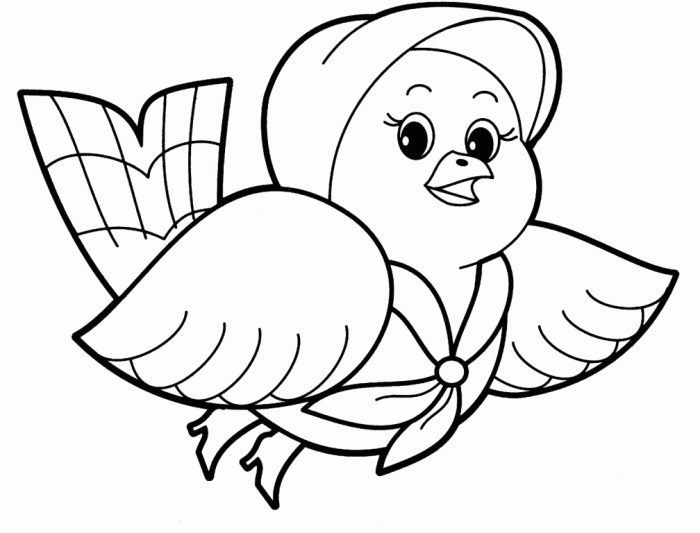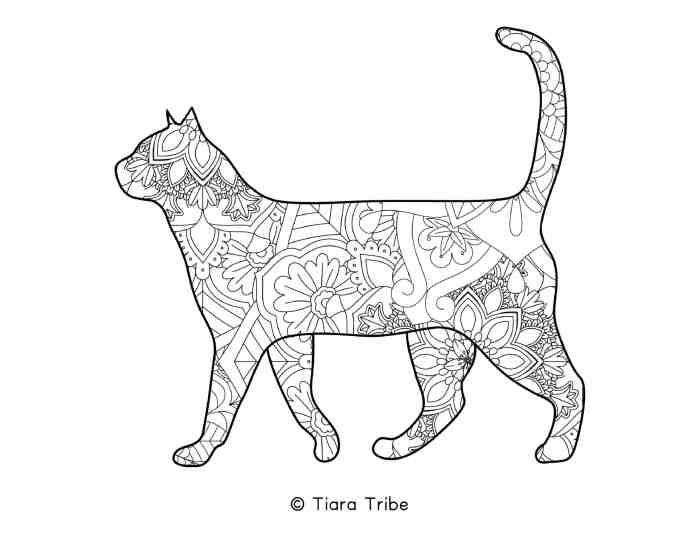Coloring Page Layout and Organization

Easy wild animal coloring pages – Creating visually appealing and easy-to-color wild animal coloring pages requires careful consideration of layout and organization. A well-structured page enhances the coloring experience, making it more enjoyable and less frustrating for children. This involves strategic placement of animals and the use of whitespace to prevent overcrowding.
Three-Animal Coloring Page Layout using HTML Table
This example uses a simple HTML table to arrange three animals across the page. Each animal will occupy its own column, providing ample space for coloring. The table’s structure ensures a balanced and organized presentation.
Easy wild animal coloring pages are super fun, especially lions and tigers! But if you're feeling like something different, check out these awesome coloring pictures of anime for a change of pace. After you've colored some cool anime characters, you can always go back to those roaring wild animals – they'll be waiting!
 |
 |
 |
The above code creates a table with one row and three columns. Each column contains an image placeholder (replace “lion.png”, “tiger.png”, and “zebra.png” with actual image file names). The `width` and `height` attributes control the size of the images, ensuring they fit comfortably within their respective cells. Adjust these values as needed to fit your chosen artwork. Consider adding more rows if the animals require more vertical space.
Four-Animal Coloring Page Layout using HTML Table, Easy wild animal coloring pages
Expanding on the previous example, a four-animal coloring page can be created using a similar table structure, but with four columns. This arrangement maintains a balanced distribution of animals, preventing any single animal from dominating the page.
 |
 |
 |
 |
This code displays four animals in a single row using four columns. Again, remember to replace the image placeholders with your actual image files. The reduced image size (`width=”150″ height=”150″`) accommodates four animals within a standard page width. Experiment with different image sizes and column widths to achieve optimal visual balance. For larger animals, consider using two rows.
Design Element Organization for Visual Appeal
Effective organization ensures the coloring page is both visually appealing and easy to color. Adequate spacing between animals prevents colors from bleeding into each other. Consider using a light background color to make the animals stand out. Avoid placing animals too close to the edges of the page to allow for comfortable coloring. A consistent visual style, using similar line weights and shading techniques across all animals, adds to the overall aesthetic coherence.
The use of a grid system (either explicitly with CSS Grid or implicitly with tables) can help to maintain consistent spacing and alignment, leading to a more professional and visually pleasing final product.
Illustrative Details and Descriptions: Easy Wild Animal Coloring Pages

Creating engaging coloring pages requires careful attention to detail. The visual appeal and educational value are significantly enhanced by accurate and captivating illustrations, accompanied by interesting facts that will spark children’s curiosity about the animals. Let’s explore how to achieve this.
The success of these coloring pages hinges on a combination of visually appealing artwork and informative descriptions. By incorporating accurate details and interesting facts, we can transform simple coloring activities into enriching learning experiences.
Animal Feature Details
Each animal should be depicted with careful attention to its unique characteristics. For example, a lion’s mane should be rendered with individual strands to suggest texture, while a cheetah’s spots should be individually drawn for realism. Eyes should convey the animal’s personality; a playful monkey might have wide, expressive eyes, while a wise owl could have smaller, more serious ones.
Consider the animal’s fur, scales, or feathers – depict these textures using varying line weights and shading techniques to create depth and visual interest. A fluffy bunny should look soft and cuddly, while a rough-skinned crocodile should appear tough and scaly.
Animal Fact Descriptions
Alongside the illustrations, provide short, engaging descriptions for each animal. These descriptions should be age-appropriate and include interesting facts that will capture children’s imaginations. For instance, alongside a lion coloring page, you might write: “Lions are the kings of the jungle! They have powerful roars that can be heard from miles away. A group of lions is called a pride.” For a giraffe, you could write: “Giraffes are the tallest mammals in the world! They have long necks that help them reach high into the trees to eat leaves.” Keep the language simple, direct, and exciting.
Habitat Background Depiction
The background of each coloring page should accurately reflect the animal’s natural habitat. For a polar bear, depict a snowy arctic landscape with ice floes and perhaps a glimpse of the open ocean. For a monkey, a lush jungle teeming with vibrant plants and other animals would be appropriate. Use simple shapes and lines to suggest trees, mountains, water, or other elements of the habitat.
Avoid overwhelming the page with excessive detail; the focus should remain on the animal. Use subtle shading and color variations to create depth and realism. For instance, a darker shade of green could suggest the shadows beneath the leaves of a jungle canopy.
Expert Answers
What age group are these coloring pages best suited for?
These coloring pages are ideally designed for preschoolers and early elementary school children (ages 3-8), though older children may also enjoy them.
What kind of paper is best for these coloring pages?
Thicker paper, such as cardstock or drawing paper, is recommended to prevent bleed-through from crayons, markers, or colored pencils.
Can I use these coloring pages for commercial purposes?
The commercial use of these coloring pages may depend on the specific license under which they are provided. Always check the license agreement before using them for commercial purposes.
Where can I find more inspiration for animal designs?
Explore nature documentaries, children’s books featuring animals, and online resources like Pinterest for inspiration. Observe animals in real life or at zoos to understand their features better.
